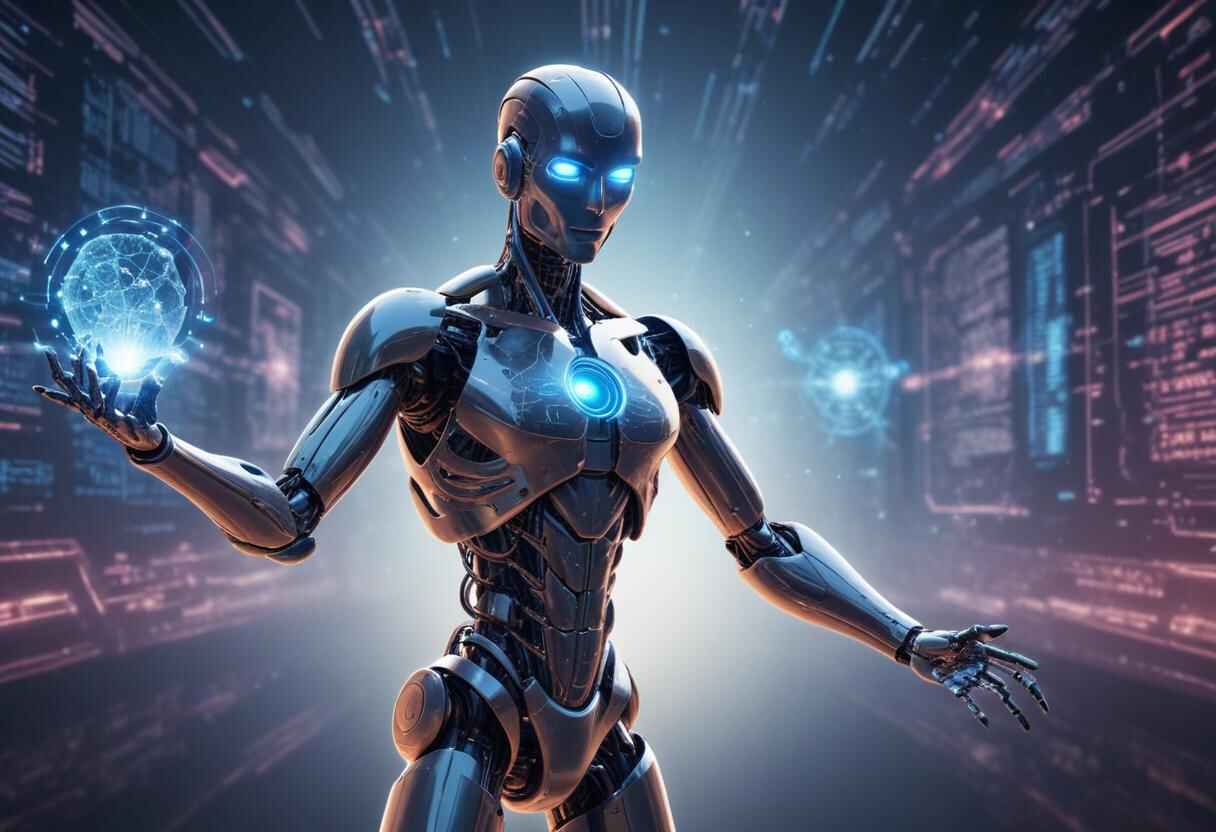The metaverse is a shared online space that combines real-world and virtual experiences. We’re starting to interact online in this new method. In this digital world, people can work, play, socialize, and create. Machine learning (ML) is a key technology making the metaverse possible. This article looks at how machine learning is improving the metaverse, making it more powerful, and influencing its future.
Improved User Experience with Personalization
Machine learning is great at analyzing lots of data to understand what people like and how they behave. In the metaverse, this helps create very personalized experiences. Machine learning can look at what a user does and likes to customize content, suggest activities, and create personalized virtual environments. For example, when someone enters a virtual shopping mall in the metaverse, they might see personalized store and product suggestions based on their past shopping habits.
Machine learning also personalizes social interactions. It can suggest potential friends, groups, or events that match a user’s interests, making the virtual world more engaging and socially connected. This level of personalization makes users happier and keeps them coming back to the metaverse.
Smart Virtual Assistants and NPCs (Non-Player Characters)
Machine learning powers non-playable characters (NPCs) and virtual assistants, making the metaverse more dynamic and interactive. These smart entities can understand and respond to users naturally, making the virtual world feel more real and responsive. For instance, a virtual assistant could help users find their way, manage their schedules, or even provide companionship in the metaverse.
These virtual characters can learn from encounters and gradually get better at responding because of machine learning. This ability helps NPCs and virtual assistants offer more detailed and helpful interactions, improving the user experience. Intelligent NPCs in games are able to adjust to players’ tactics, increasing the difficulty and replay value of the experience.
Advanced Content Creation and Generation
Creating large and varied virtual environments in the metaverse needs a lot of content. Machine learning helps with this by using tools like Generative Adversarial Networks (GANs) and Variational Autoencoders (VAEs). These tools can automatically create realistic textures, objects, landscapes, and even whole virtual worlds based on provided data and design rules.
Machine learning also powers procedural content generation, which makes unique and different experiences for users. In games and virtual exploration, this means each user can face different terrains, challenges, and scenarios, making the experience more engaging and enjoyable. Machine learning also helps optimize content for better performance, ensuring virtual environments look great while running smoothly.
Better Social Interactions and Safety
Machine learning plays a key role in improving social interactions in the metaverse. It can detect and reduce toxic behavior, harassment, and other negative interactions by analyzing communication patterns and flagging inappropriate content. This helps keep the metaverse safe and welcoming for everyone.
Additionally, machine learning can improve positive social interactions by providing real-time language translation, allowing users from different language backgrounds to communicate easily. It can also use sentiment analysis to understand users’ emotions and adjust interactions to be more empathetic and supportive, creating a kinder virtual environment.
Better Immersion with Realistic Simulations
The metaverse aims to offer deeply engaging experiences, and machine learning helps achieve this by creating lifelike simulations of natural processes like fluid dynamics, lighting, and physics. These algorithms predict and simulate how objects behave in virtual worlds, making the experience more realistic and captivating.
For instance, in a virtual reality game set in a futuristic city, machine learning can simulate realistic weather changes, how crowds move, and how the environment reacts. This attention to detail makes users feel fully immersed and present in the virtual world.
Personalized Learning and Education
The metaverse has the potential to change education dramatically. Machine learning can help create personalized learning experiences that fit each student’s needs and how they learn better. In a virtual classroom in the metaverse, ML algorithms can look at how well a student is doing and change what they’re learning to fit them better, giving them personalized help and tools.
Also, immersive experiences in virtual reality (VR) and augmented reality (AR), powered by ML, can make learning more fun and easier to understand. For example, medical students could practice surgeries in a virtual world and get feedback right away, with different levels of difficulty, so they can get better and more confident.
Opportunities in Economy and Business
Machine learning is changing how money works in the metaverse. Virtual economies can use ML to study data and understand trends, which helps them set prices and sell things better. Businesses in the metaverse can use ML to learn about what people want, guess how much they’ll need, and make marketing that fits them.
Also, ML can help with safe and fast transactions using blockchain. This means that trading virtual things is safe and simple to see through. This makes a strong money system that helps the metaverse grow and stay healthy.
Conclusion
Machine learning is a key technology driving the metaverse forward. It makes experiences personal, interactions smart, content advanced, and simulations realistic. As the metaverse grows, machine learning will be essential for making it exciting, immersive, and open to everyone.
Looking ahead, the metaverse with machine learning will go beyond limits, letting people connect, create, and explore like never before. This new digital era will be shaped by machine learning, making the metaverse a lively and successful virtual world.
